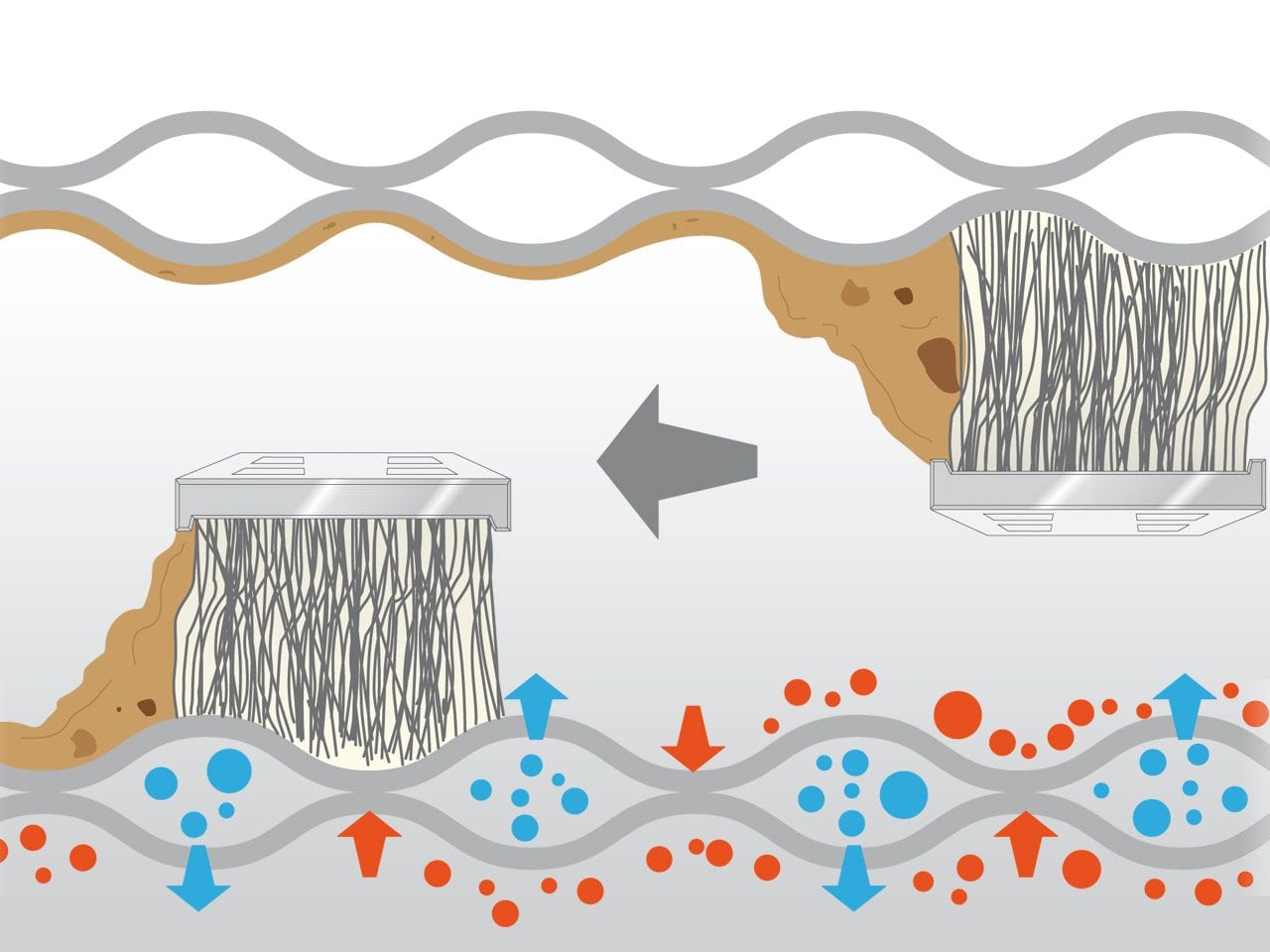Wastewater Heat Exchanger E‑Plate
Our self-cleaning heat exchanger E‑Plate enables wastewater heated during the process to be used to heat cold fresh water. This helps to optimize the temperatures of the water flows and to increase the energy efficiency of the wastewater treatment plant.
Energy and Performance Efficient Wastewater Treatment with Heat Recovery
The use of our wastewater heat exchanger can be either included in the planning of your new wastewater treatment right from the start or being retrofitted to optimize existing wastewater treatment plants.
Our engineers will be pleased to advise you on how to make the entire plant more energy and performance efficient. Please also take advantage of the possibility to calculate your energy saving potential, which you could have by using our E‑Plate wastewater heat exchanger.
Energy from Wastewater with our Self-Cleaning Heat Exchanger E‑Plate
YouTube is a service of YouTube LLC, a subsidiary of Google Inc, USA. You can find more information on data processing through this in our privacy policy. If you would like to watch this video, you also consent — revocable at any time — to the transfer of your data to the USA and the associated data processing in accordance with Art. 49 (1) a) DSGVO.
Operating Principle of the E‑Plate Heat Exchanger

E‑Plate is a plate heat exchanger, more specifically a thermal plate heat exchanger. Due to its optimized brush system it is also suitable for heavily polluted wastewater. The E‑Plate uses double-wall plates (“thermal plates”), which are kept clean at all times with a simple cleaning system. The cooling water is distributed evenly over all thermal plates and flows through the heat exchanger once in a ring shape. The wastewater is fed into the heat exchanger from the bottom and flows upwards through the tank to be drained off at the top side. In addition to that, the cold river water flows on the inside of the thermal plates and the hot waste water flows on the outside.
The rotating brushes guarantee a high flow rate and increased heat exchange performance. The wastewater also flows in spiral-shaped circulation thanks to the rotating motion of the brushes. This achieves the effect of a counter-flow heat exchanger. This design principle enables installation in the outlet of existing wastewater treatment systems without using additional pressure booster pumps. No elaborate measurement and control technology is required.
Particularly suitable applications:
- Paper manufacturing
- Biogas plants
- Casting industry
- Hardening plants
- Dye houses
- Industrial laundries
- Food industry
Efficient Treatment of Industrial Wastewater with E‑Plate

The info graphic uses the example of a paper factory. The process water supplied at the start of production is too cold at 12 degrees Celsius and must be heated up. At the end of the process, the wastewater has a temperature of 55 degrees Celsius and is therefore too hot for the installed biological wastewater treatment system. The sewage treatment plant would no longer work at this temperature, as the microorganisms would die. Furthermore, an official upper temperature limit for discharging wastewater is 30 degrees Celsius.
It is not only paper factories that have problems with the water temperature on the outlet. Operators of biogas plants, foundries and hardening plants, dye works, industrial-scale laundries and even the food industry can benefit from this type of system. Using the heat exchanger can save the plant 40% of the natural gas previously required. The investment pays for itself in just one year.
Your contact person for all questions on wastewater treatment
